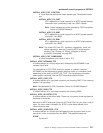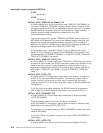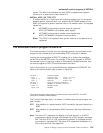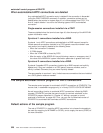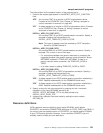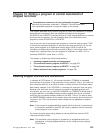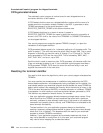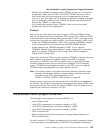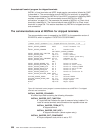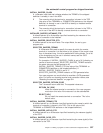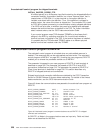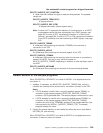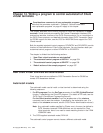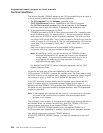
v Whether your application programs record TERMIDs for later use. For example,
an application might issue an EXEC CICS START TERMID command, with a
time interval after which the transaction is to be initiated against the named
terminal. If, during the delay interval, the terminal definition is deleted, re-shipped,
and re-installed with a different local TERMID, the started transaction could fail
because the TERMID no longer exists.
If your application programs record TERMIDs in this way, your autoinstall
program may need to use a mapping file.
Example
Assume that you have two terminal-owning regions, TORA and TORB, and that
they use the same set of terminal identifiers, T001 through T500. TORA and TORB
route transactions to the same application-owning region, AOR1. To prevent naming
conflicts when terminals are shipped to AOR1, your control program in AOR1 could:
v Accept the TERMIDs allocated by TORA. That is, leave the TERMINAL attribute
of the remote definition set to the same as the REMOTENAME attribute.
v Create aliases for the TERMIDs allocated by TORB. That is, reset the
TERMINAL attribute of the remote definition, using a mapping file as described
above. For example, TERMIDs of T001 through T500 could be mapped to
aliases of A001 through A500.
This solution allows two TORs using the same set of TERMIDs to access the same
AOR. However, even though the aliases created in the AOR are mapped
consistently to TERMIDs in the TOR, the solution does not
guarantee
that data
mismatch problems cannot occur if terminals are re-shipped. This is because it
relies on TERMIDs being allocated consistently
in the TOR
—that is, on specific
TERMIDs always being assigned to the same physical devices.
Note: Your control program could use the correlation identifier contained in each
terminal and connection definition to check whether a definition has been
re-installed in the TOR—see the description of the
INSTALL_SHIPPED_CORRID_PTR parameter on page 528.
A better solution might be to map the terminal alias in the AOR to the netname of
the terminal. This would at least guarantee that a specific alias always relates to the
same physical device. But it would still require TERMIDs for which aliases are
not
created to be consistently allocated in the TOR.
The autoinstall control program at INSTALL
The autoinstall control program is invoked at INSTALL for:
v Local VTAM terminals
v Local APPC single-session connections initiated by a CINIT
v Local APPC parallel-session connections initiated by a BIND
v Local APPC single-session connections initiated by a BIND
v Client virtual terminals
v Remote shipped terminals and connections, including shipped definitions of
Client virtual terminals.
On each invocation, CICS passes a parameter list to the control program by means
of a communication area addressed by DFHEICAP. The parameter list passed at
the autoinstall control program for shipped terminals
Chapter 13. Writing a program to control autoinstall of shipped terminals 525



